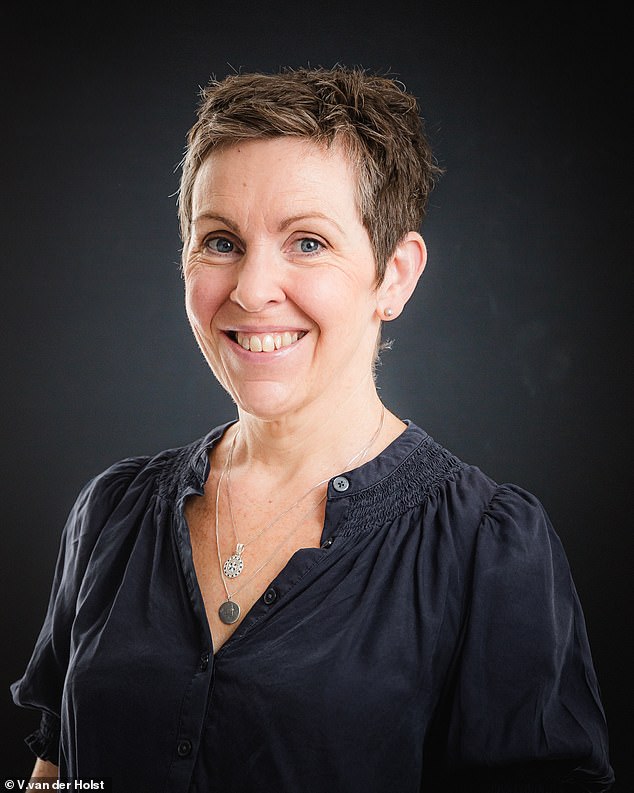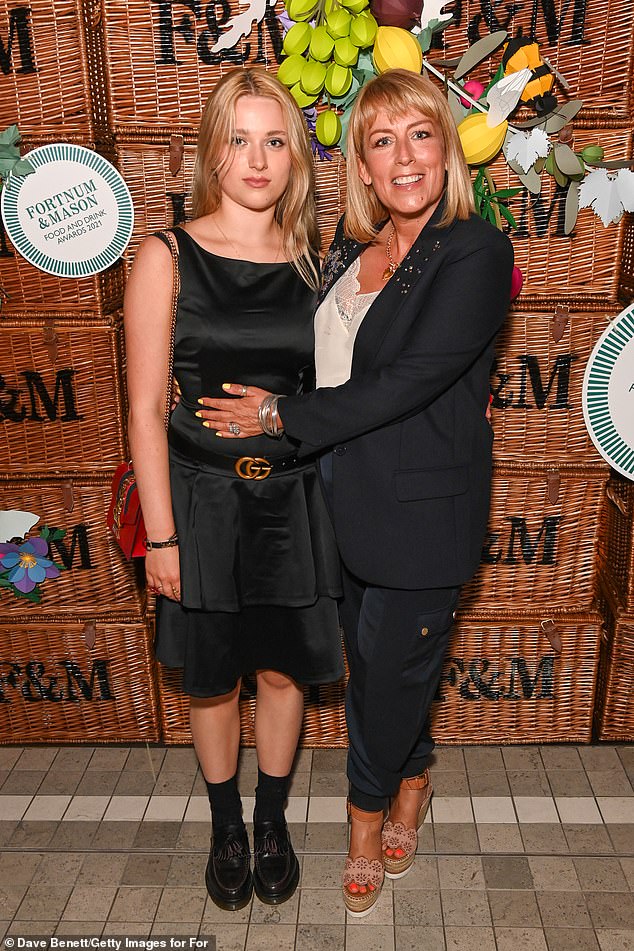Actress Fay Ripley made headlines yesterday when she said she would happily breastfeed her grandchildren in the future (her own children are currently 17 and 21).
Reactions were swift and varied: some people were shocked, thinking it was physically impossible, while others found the idea unpleasant.
But the fact is that grandmothers can breastfeeding their grandchildren. If they have already breastfed before, this is called relactation. If a woman who has never been pregnant begins to breastfeed, this is called induced lactation.
Actress Fay Ripley made headlines yesterday when she said she would happily breastfeed her grandchildren in the future. Pictured with her daughter Parker Lapaine in 2021

Relactation is usually possible for mothers who have previously breastfed, however, the longer that interval, the more difficult it may be.
A landmark paper was published in 1956 on the experiences of ten grandmothers who “relacted” their grandchildren. Remarkably, milk quality also does not appear to be significantly different with relactation, according to a study published in 1980 in the Journal of Paediatrics, although women who had never been pregnant but then breastfed (“induced lactation”) did not produce colostrum, the first form of milk produced by a mother-to-be, which has a higher antibody content.
Relactation is usually possible for mothers who have previously breastfed; however, the longer that interval, the more difficult it may be.
As a lactation consultant, most of the parents I help with relactation have had a difficult experience with breastfeeding, regret stopping breastfeeding, and want to try again. I have also supported women who had to stop breastfeeding for breast cancer treatment. If there are weeks or months between stopping breastfeeding and starting the relactation process, the chances of achieving full milk production are quite good.
But it’s not an easy process. It takes time, patience and commitment. The mother will need to pump or put the baby to the breast at least eight times every 24 hours to stimulate milk production. It may take several weeks for the breasts to start producing milk again. However, if a mother breastfeeds her baby years later, it will likely take longer and she may not produce as much milk as if she tried to breastfeed again after, say, a few months.
The World Health Organization states: “It is often assumed that the shorter the interval since a woman last breastfed… the more likely she is to resume breast-feeding. Reports from industrialized countries tend to support this idea.
‘But several studies from developing countries indicate that relactation sometimes occurs 15 or 20 years after a woman breastfed her last child, even after menopause.’
There are now many mothers over 40 who are perimenopausal (in the period leading up to menopause) and breastfeeding, so those gaps might not be as great.

The WHO states that “relactation sometimes occurs 15 or 20 years after a woman breastfed her last child, even after menopause.”

If you’re thinking about breastfeeding months or years after you last breastfed, consultant Caiomhe Whelan writes that you should “be patient with yourself and your baby, and have the support of a lactation consultant.”
If the woman has not previously breastfed (induced lactation), it is much more difficult. This practice is more common among parents who wish to breastfeed a baby who has been adopted or born to a surrogate mother.
How is this possible, then, from a physical point of view? In order to breastfeed, you need glandular tissue in the breasts that produces milk. This tissue develops during puberty, but it only starts producing milk in response to hormonal changes that occur during pregnancy and after childbirth.
The most important hormone involved in milk production is prolactin. Women who want to have children again need to increase their prolactin levels in order to start producing milk again.
They can achieve this through regular nipple stimulation, either by expressing milk, having the baby suck at the breast, or both.
In fact, there are protocols to induce lactation; the most well-known is the Newman-Goldfarb protocol, which involves “tricking” the body into thinking it is pregnant and, in turn, preparing the breasts for milk production.
The person inducing lactation takes the combined birth control pill to simulate pregnancy and the anti-nausea drug domperidone, which increases prolactin levels (prescribed off-label, meaning it is not approved for this use).

Fay Ripley’s comments surprised many people who thought the idea of a grandmother breastfeeding was physically impossible, but this is not the case.

If you decide that you would like to breastfeed again, it is important to understand from the beginning that it may not work.
They will also follow a milk pumping schedule to help stimulate milk production. The Newman-Goldfab protocol recommends beginning the lactation induction process two to six months before the baby is due or arrives.
If you decide you’d like to breastfeed again, it’s important to understand from the start that it might not work: As the Centers for Disease Control and Prevention (the U.S. national public health agency) recommended earlier this year: “It’s important to help mothers set realistic expectations for relactation based on their individual circumstances. Relactation can take a long time.
‘Success depends in part on the parents’ motivation and dedication to the process, as well as the help of a trained lactation professional. Milk production may begin within a few days of beginning nipple stimulation, but it may take weeks or months.’
Yes, grandmothers can breastfeed their babies, but these situations tend to occur in developing countries and in a Western context, it is very easy to take them lightly. In other cases, it could be a family affected by a natural disaster, where the mother dies and the family cannot access or afford formula milk.
In situations like these, a grandmother breastfeeding a baby could be the difference between that baby living or dying.
- A list of lactation consultants in the UK is available on the Lactation Consultants of Great Britain website, lcgb.org
As told to Julie Cook


